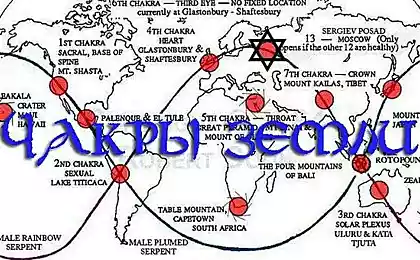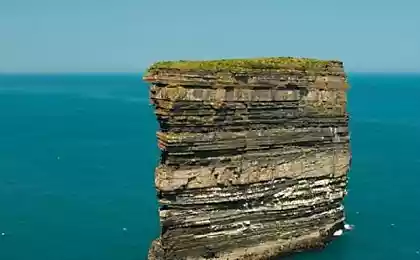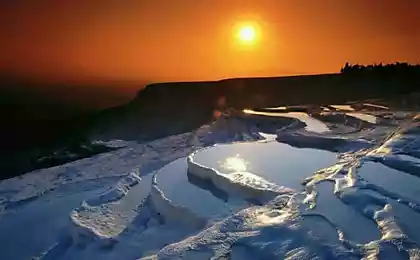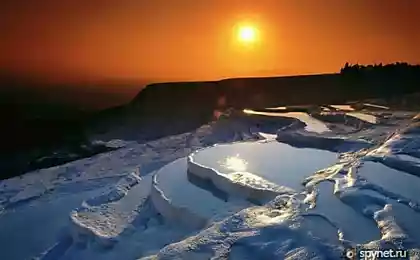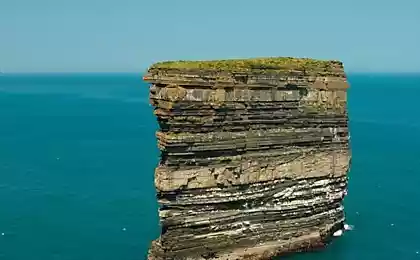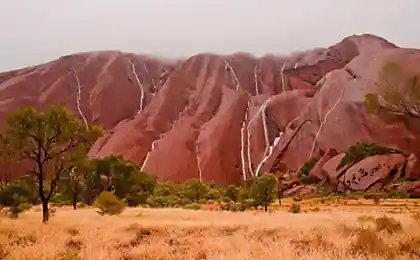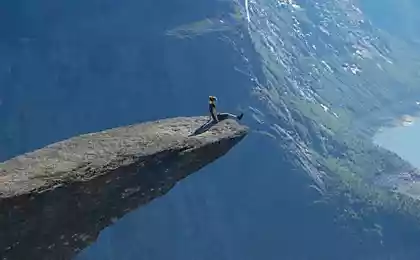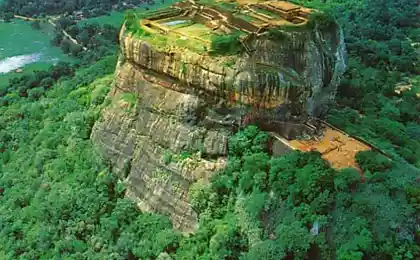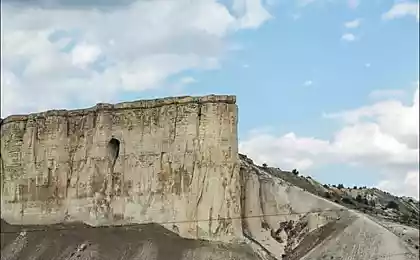1128
Rock Uluru in Australia
Uluru Rock (Uluru) and Ayers Rock (Ayers Rock) is located in the central part of Australia. The height of the cliff is 348 meters. Width - 3 km and the length of 3, 6 km. The red sandstone of which the rock Uluru, depending on the position of the sun painted a different color from dark purple to gold. Uluru is a UNESCO World Heritage Site.

Amazing views of Uluru can impress everyone.
In the center of Australia from horizon to horizon stretches the desert, it was once the bottom of an ancient sea. And suddenly in the middle of the desert plains, sharply out of nowhere, like an island there is a rock. The world's largest monolith rising above the flat plain. This is one of many contrasts, which can be seen in this wonderful and sacred place. The lump of sandstone height of more than three hundred meters, an area of two square kilometers, it is destroyed by the erosion of a mountain peak. By land, it maybe takes six to deprive kilometers. Debris washed down from the cliff, accumulated at its base, and it is deeper and deeper into the ground. One would have to go sandstone layers horizontally, but three hundred million years ago the most powerful seismic shock reared bottom of the ocean, and since then has done the erosion furrows vertical layers. At first glance, the rock seems lifeless, but in fact this monolith in a sense, an oasis in the desert. Many plants around the feed water flowing from the rock desert during thunderstorms. Water stains on its surface, it left traces of water, they have long reminded of the past has long been the rain. At the foot of the cliffs is the source where the natives have long hunted. Kangaroo and other animals come to drink and eat source fruits and seeds of plants.
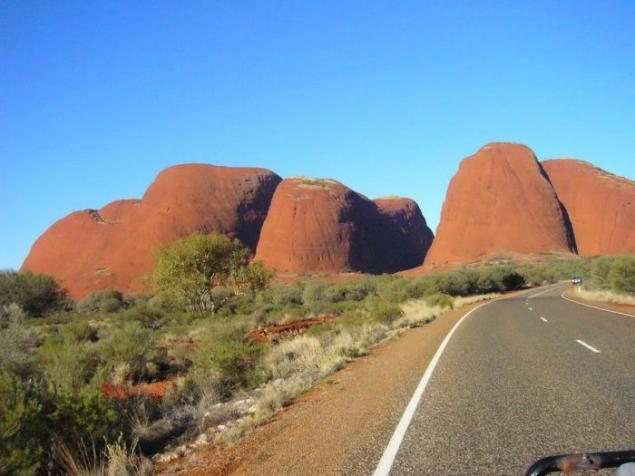
In the mountain-island two names Uluru and Evers rock. These two names reflect two completely different view of the world. The researchers found the rock, named it in honor of the colonial traditions of the then Governor of South Australia Henry Eeversa sulfur. Rock never belonged to this man, but the name remained. It reflects very well the mindset of Europeans who believe that it is possible to award a part of the natural world to one person. The natives call this rock Uluru, they are tightly linked to the ground Sway. Australians called arid region rocks - dead heart of Australia. But Aboriginal and Uluru and everything around him live. Aboriginal culture is a thread in the vast carpet of life, which are interwoven and the people and animals and plants, and of course the mountain.
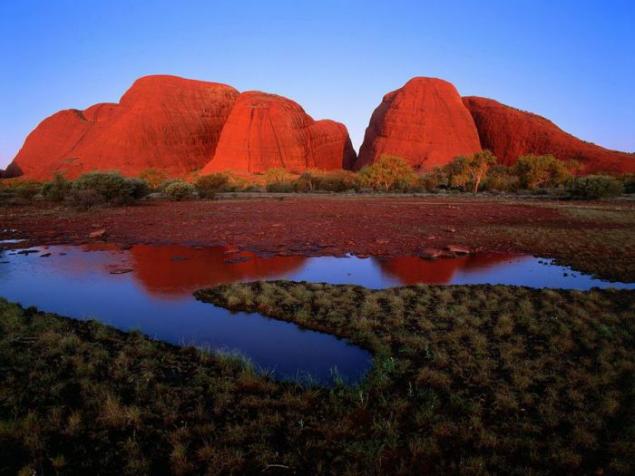
In the desert its diverse flora and fauna, shrubs, kangaroos, spiny lizard Moloch, and many other interesting species of wildlife. To see Uluru at different times of the day, it means to enjoy the subtle play of light and shadow. Hour after hour passed, and under these southern skies revealed a spectrum of colors. Like other important landmarks Uluru Aboriginal and reminds all the people around about the time of dreams about the oral traditions that are the basis of cultural heritage. Already tens of thousands of years surrounding the natives come to Mount Uluru, where ceremonies are performed which tells the legend of the birth of the world. In place of these rituals unauthorized entry is strictly closed.
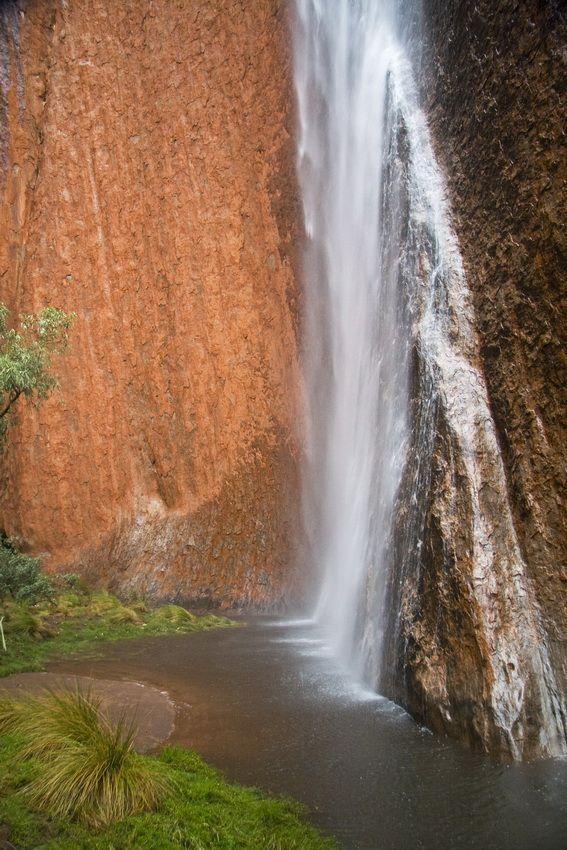
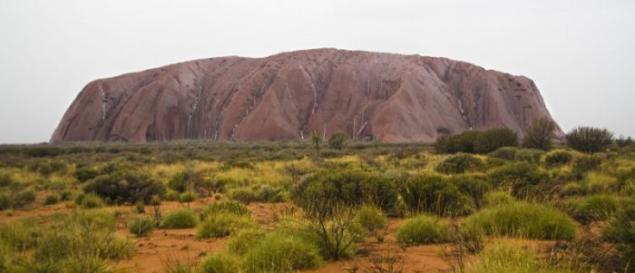
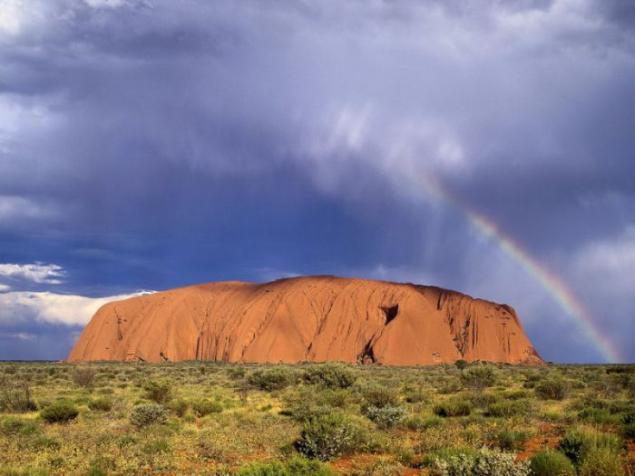
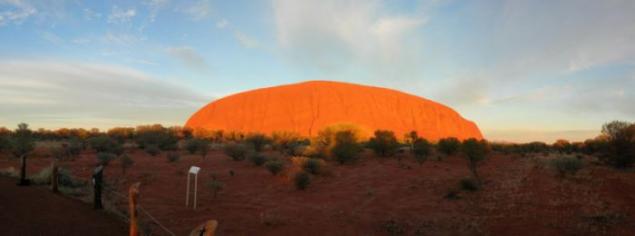
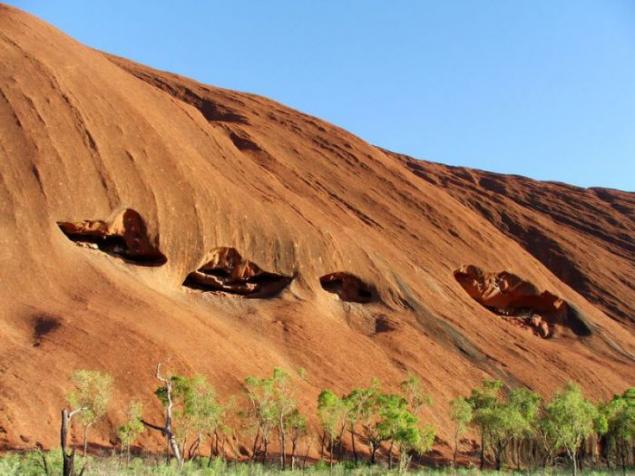
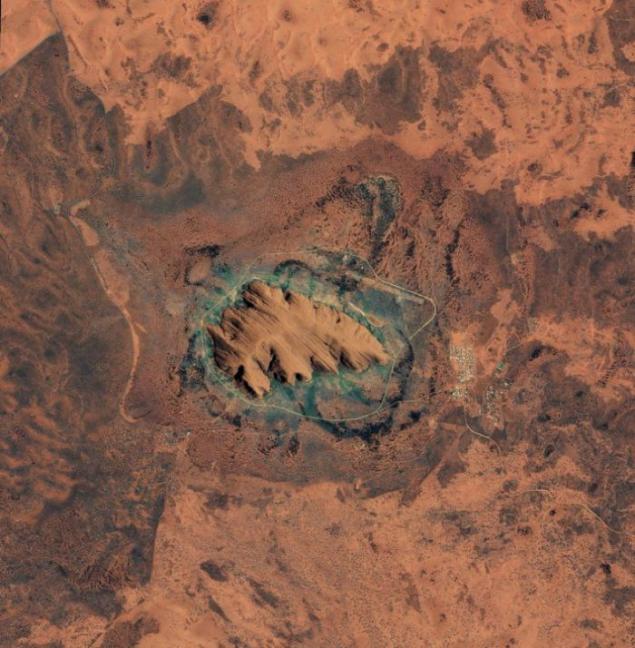
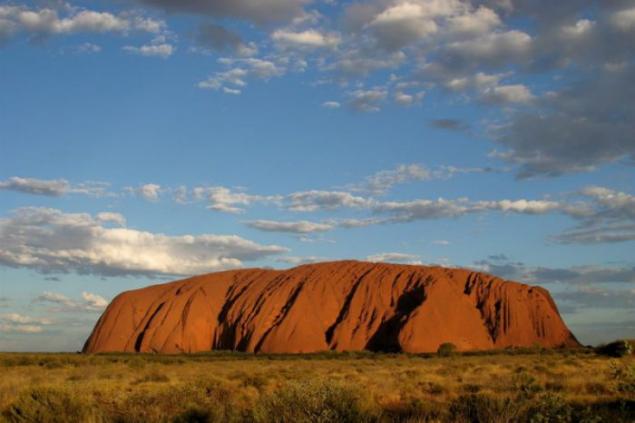
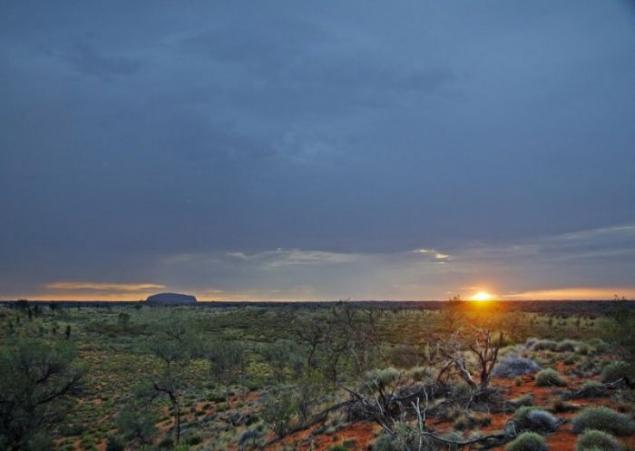
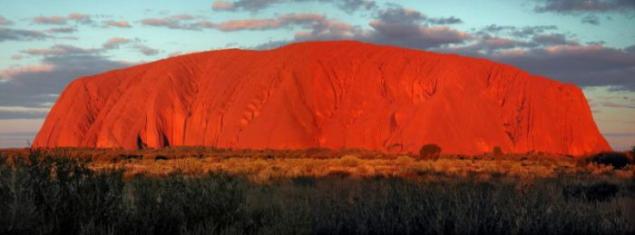
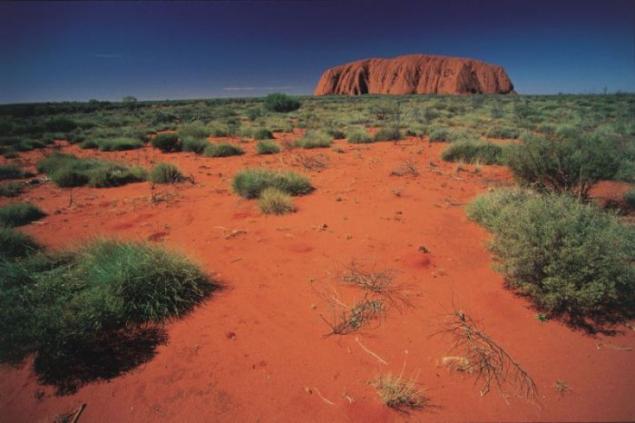
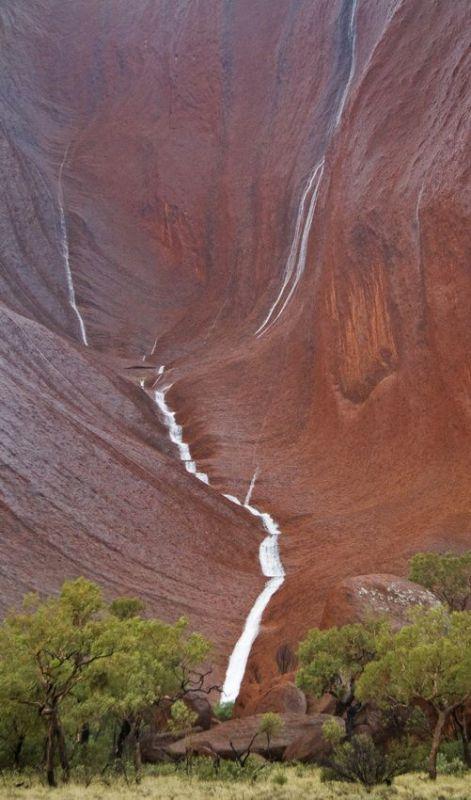
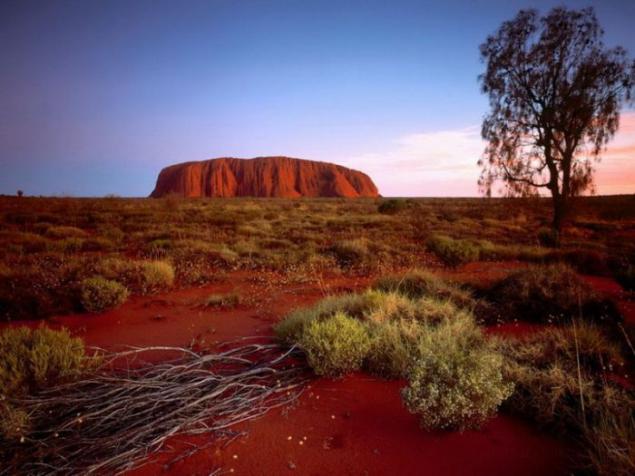
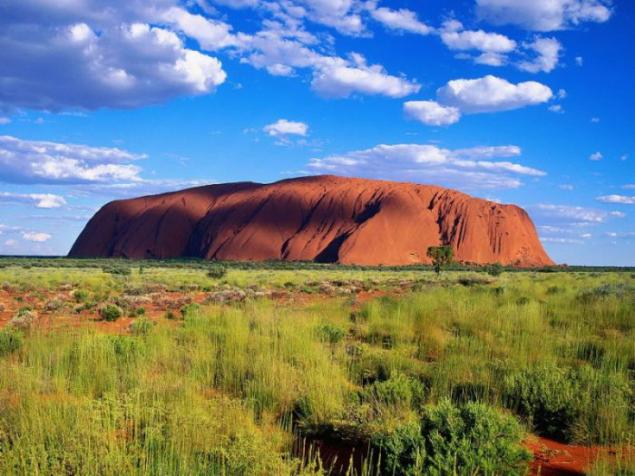
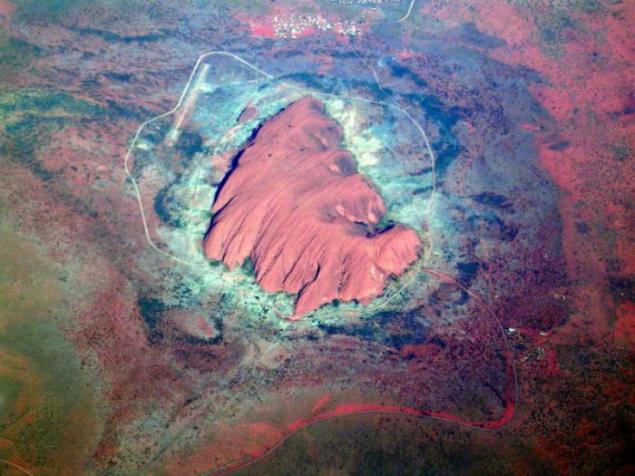
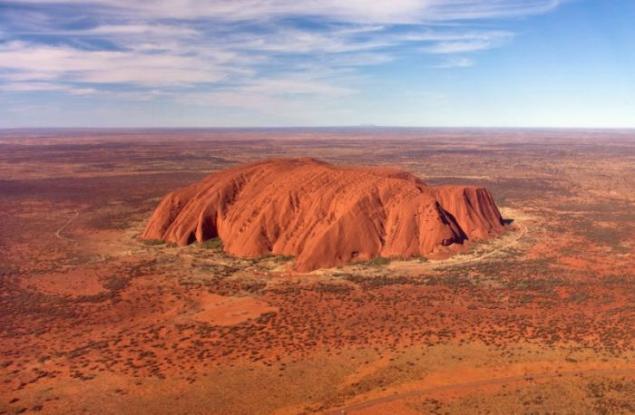
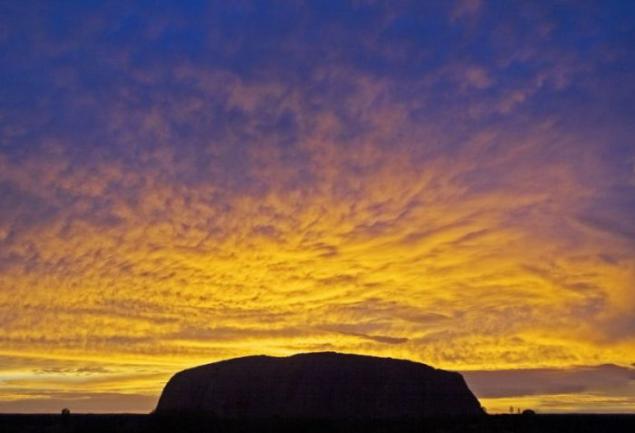
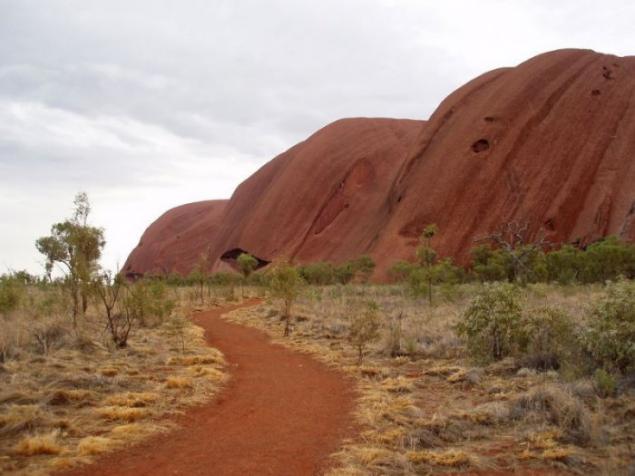
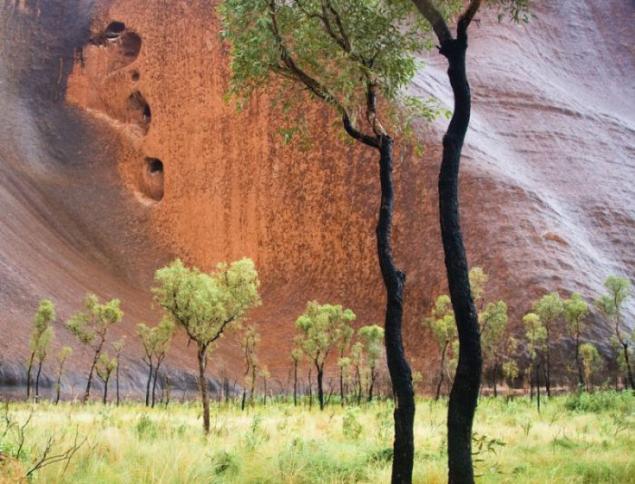

Amazing views of Uluru can impress everyone.
In the center of Australia from horizon to horizon stretches the desert, it was once the bottom of an ancient sea. And suddenly in the middle of the desert plains, sharply out of nowhere, like an island there is a rock. The world's largest monolith rising above the flat plain. This is one of many contrasts, which can be seen in this wonderful and sacred place. The lump of sandstone height of more than three hundred meters, an area of two square kilometers, it is destroyed by the erosion of a mountain peak. By land, it maybe takes six to deprive kilometers. Debris washed down from the cliff, accumulated at its base, and it is deeper and deeper into the ground. One would have to go sandstone layers horizontally, but three hundred million years ago the most powerful seismic shock reared bottom of the ocean, and since then has done the erosion furrows vertical layers. At first glance, the rock seems lifeless, but in fact this monolith in a sense, an oasis in the desert. Many plants around the feed water flowing from the rock desert during thunderstorms. Water stains on its surface, it left traces of water, they have long reminded of the past has long been the rain. At the foot of the cliffs is the source where the natives have long hunted. Kangaroo and other animals come to drink and eat source fruits and seeds of plants.

In the mountain-island two names Uluru and Evers rock. These two names reflect two completely different view of the world. The researchers found the rock, named it in honor of the colonial traditions of the then Governor of South Australia Henry Eeversa sulfur. Rock never belonged to this man, but the name remained. It reflects very well the mindset of Europeans who believe that it is possible to award a part of the natural world to one person. The natives call this rock Uluru, they are tightly linked to the ground Sway. Australians called arid region rocks - dead heart of Australia. But Aboriginal and Uluru and everything around him live. Aboriginal culture is a thread in the vast carpet of life, which are interwoven and the people and animals and plants, and of course the mountain.

In the desert its diverse flora and fauna, shrubs, kangaroos, spiny lizard Moloch, and many other interesting species of wildlife. To see Uluru at different times of the day, it means to enjoy the subtle play of light and shadow. Hour after hour passed, and under these southern skies revealed a spectrum of colors. Like other important landmarks Uluru Aboriginal and reminds all the people around about the time of dreams about the oral traditions that are the basis of cultural heritage. Already tens of thousands of years surrounding the natives come to Mount Uluru, where ceremonies are performed which tells the legend of the birth of the world. In place of these rituals unauthorized entry is strictly closed.





















